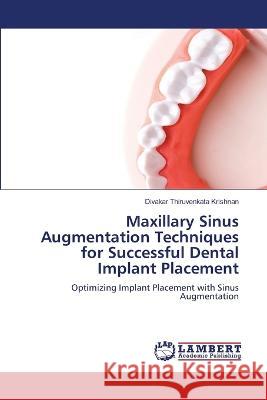Maxillary Sinus Augmentation Techniques for Successful Dental Implant Placement » książka
Maxillary Sinus Augmentation Techniques for Successful Dental Implant Placement
ISBN-13: 9786206158387 / Angielski / Miękka / 2023 / 56 str.
Maxillary sinus augmentation techniques are critical for successful dental implant placement in the posterior maxilla. The key to achieving long-term stability of the implant-supported restoration is to select the appropriate technique based on the patient's clinical situation and the clinician's skill level. Maxillary sinus augmentation procedures are indicated for patients with limited vertical bone height, severe bone resorption, and compromised sinus membranes. Preoperative evaluation and planning are essential in selecting appropriate techniques and achieving successful outcomes. CBCT imaging plays a crucial role in assessing bone density, volume, and implant position. Various techniques, including lateral window, crestal, and balloon sinus augmentation, are available to clinicians, each with its advantages and disadvantages. The selection of appropriate bone grafting materials, including autogenous, allograft, and xenograft, is also a critical consideration. Managing complications during and after the procedure is essential for achieving successful outcomes, and postoperative care and follow-up are critical for ensuring long-term stability of the implant-supported.











